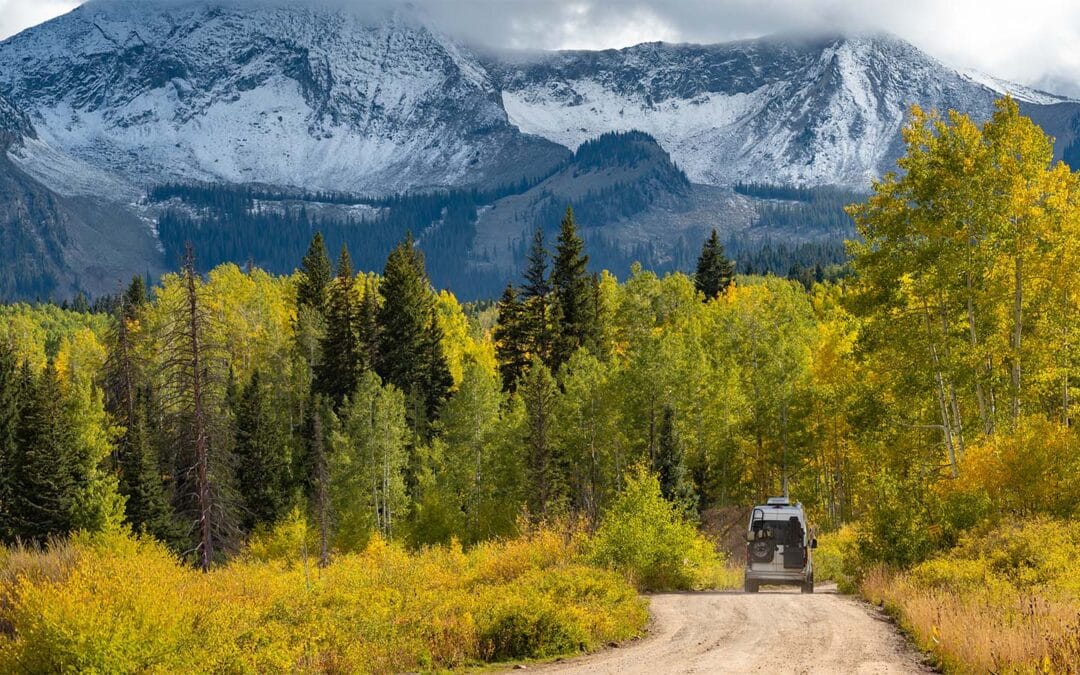In the final weeks of the Biden administration’s term, the Bureau of Land Management rushed to finalize a controversial update to the Resource Management Plan (RMP) for the Grand Staircase Escalante National Monument. At odds with the 2020 plan, the 2025 RMP dramatically restricted motorized access, reduced opportunities for dispersed camping, and shut down countless miles of roads and trails, many of which have been used by locals and visitors for generations such as the V road— highlighted in Volume 3 of our Lost Trails Guidebook series which features routes and campsites that are restricted or may be closed due to national monument RMPs.
This new plan was not only rushed through during a lame duck period, but it also disregarded thousands of public comments and input from local governments, stakeholders, and recreation users. The public lands in and around the Grand Staircase are part of the backbone of Utah’s recreation economy and outdoor heritage.

Empty Assurances
As outdoor enthusiasts and lovers of America’s public lands, we often hear assurances from national monument supporters that these designations won’t disrupt our favorite recreational activities. They paint a picture of monument designation without sacrifice—protecting natural wonders while keeping the doors open for hiking, camping, and exploration. But this recently approved RMP tells a different story. Spanning nearly 1.87 million acres, the Grand Staircase-Escalante is a gem of the American Southwest and has been a world-renowned motorized recreation destination for generations. Yet, the plan designates about 1.23 million acres—roughly two-thirds of the entire area—as “primitive,” effectively closing it to all motorized access. If you’ve heard that monuments don’t affect recreation, this plan exposes that claim as misleading at best.
Why Motorized Closures Matter More Than You Think
Let’s break it down: In a monument this vast, closing 1.2 million acres to vehicles isn’t just a minor tweak—it’s a seismic shift in how people experience the land. Motorized access is the gateway for many to reach deeper into the backcountry. Without it, cherished trails become inaccessible for families with young kids, elderly adventurers, or anyone who can’t “just walk.” Dispersed camping spots, those hidden gems where you can pitch a tent under the stars away from crowds? Many are now off-limits.
Supporters might counter that you can still hike or horseback ride into these areas, but that’s missing the point. Recreation isn’t one-size-fits-all. Closing such a massive swath of land to motorized use ripples out to affect every form of enjoyment. It’s not just about convenience—it’s about making public lands available to all Americans.
Want to learn about more trails affected by national monuments?
In Volume 3 of the Lost Trails Guidebook we focus on 22 at-risk trails (including V Road) that are located within 10 proposed or recently designated National Monuments, including Grand Staircase-Escalante. Many of these routes lead to spectacular viewpoints, forgotten canyons, and memorable primitive backcountry campsites. Support our work and explore these trails!
Losing Access to Iconic Wonders
One of the most glaring examples in the RMP is the closure of the V Road, a 7-mile route that serves as the primary access to the trailhead for the Cosmic Ashtray—one of the monument’s most beloved and otherworldly hikes. This sandstone formation, often called a “cosmic eye” or “volcano,” draws visitors from around the world with its surreal, swirling basin filled with fine sand. Previously reachable via high-clearance 4WD vehicles, the V Road allowed people to get close enough for a manageable hike in. Now, the new plan shut down motorized traffic to the trailhead. A ~2-mile roundtrip hike just turned into ~20 miles.

A Small Victory, If We Push
Fortunately, the U.S. House of Representatives has included important language in the Fiscal Year 2026 Interior Appropriations bill that would prohibit any funding from being used to implement the 2025 RMP. Instead, it directs the BLM to manage the monument under the 2020 RMP, which was developed through a more thorough and collaborative process. The 2020 plan protects natural resources while keeping access open for multiple use, including responsible motorized recreation, grazing, and other traditional uses.
We strongly support this provision and we need your help to make sure it stays in the final version of the bill.
Take Action Now: Tell Congress to support the FY 2026 appropriations language that limits funding to the 2020 GSENM RMP.
The 2025 plan represents a sweeping land grab that undermines public access and ignores the voices of those who live, work, and recreate on these lands. By supporting the 2026 appropriations language, we can help ensure our public lands remain open and accessible for all Americans.
Let’s make sure Congress hears us clearly: Keep the 2020 plan in place and stop the 2025 closures from taking root.
Lost Trails Guidebook Vol. 3
In Volume 3 of the Lost Trails Guidebook we focus on 22 trails that are located within 10 proposed or recently designated National Monuments, including Grand Staircase-Escalante. From the soaring cliffs of Labyrinth Rims in Moab to hidden gems in Arizona’s Black Canyon to secluded two-track routes in the San Rafael Swell, we have shared some of the best trails we’ve found while doing field research for our legal fights.
Many of these routes lead to spectacular viewpoints, forgotten canyons, and memorable primitive backcountry campsites. Support our work and explore these trails by grabbing yourself a copy.





